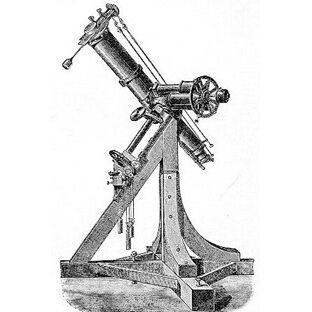Summary
This article outlines the photographic processes used by Johann Berkowski to capture the first correctly exposed image of the solar corona.
Introduction
After previous successful attempts by Fizeau and Foucault in 1845 to photograph the Sun using the photography technique known as the daguerreotype, the next milestone in solar photography was created by Julius Johann Berkowski, who captured the first correctly exposed image of the solar corona.
Whilst Berkowski’s name is carved in history for this achievement, he had no prior notable experience in astronomy, let alone solar eclipses! He was in fact a renowned local daguerreotypist who was commissioned by August Busch, Director of the Royal Observatory in Königsberg, Prussia (now Kaliningrad, Russia), to attempt to develop images of the upcoming eclipse. Busch himself attempted to observe the eclipse from Rixhöft, which now is known as Cape Rozewie, based in modern day Poland.
The general daguerreotype process
Before diving into the details, what is a daguerreotype?
The daguerreotype process, developed by Daguerre, is one that is a predecessor to the wet-collodion process used by Warren de la Rue in his eclipse expedition in 1860. The speciality of a daguerreotype is that it generates direct positive images creating a true likeness. So unlike X-ray techniques that we use today where the white represents areas where light has been blocked, lighter areas of the image represent actual brightness in the surroundings.
To generate such an image, first a copper plate thinly coated in silver is cleaned and polished in order to obtain a mirror-like appearance. This is then placed inside a dark, closed box and exposed to iodine fumes until the plate is yellow-rose in colour to make the plate light-sensitive. (Further information about the chemical reactions involved in the photography processes can be found here.) The plate is immediately inserted into the camera and exposed for a certain amount of time. With earlier daguerreotypes, exposure times ranged anywhere from three to fifteen minutes, but with technological advancements these were reduced to under a minute. Once the plate has been sufficiently exposed, it is transferred into a dark room, where hot mercury is poured onto the plate to develop the image. Finally, the image plate is completely immersed in sodium thiosulfate solution to “fix” the image in place.

Modifications
The technique Berkowski used is similar to the one described, with one exception. Since he was photographing the corona during the total solar eclipse, Berkowski had at his disposal a 6cm refracting telescope attached to a 15.8cm Fraunhofer heliometer, in which the copper image plate was inserted.


At the beginning of totality, he took an 84 second exposure image– the first clear image of a solar eclipse. He had also attempted to capture a 45 second exposure image, but unfortunately the Moon moved out of alignment, flooding the image with light. Below is a copy of the successful photograph clearly illustrating at least five prominences.
Replication

Of course, given the significance of the achievement, it was important to distribute more copies of the image. Hence, Busch instructed a local artist to create 3 enlarged steel engravings of the daguerreotype (the original was less than 8mm across) so that the image could be reproduced. Berkowski himself also made second generation daguerreotypes of the original image.
Further reading
Ashworth, W.B. (2022) Julius Berkowski, The Linda Hall Library, (Accessed: 05 July 2023).
The Daguerreotype Medium : articles and essays : Daguerreotypes : digital collections: library of Congress (no date) The Library of Congress, (Accessed: 05 July 2023).
Hunt, R. (1854) in A Manual of Photography. London: Griffin, p. 3.
Sun-Earth Day – technology through time (2006) NASA. (Accessed: 05 July 2023).
Schielicke, Reinhard & Wittmann, Axel. (2003). On the Berkowski Daguerreotype (Konigsberg, 1851 July 28): The First Correctly Exposed Eclipse Photograph of the Solar Corona. Astronomische Nachrichten Supplement. 324. 91. WALL, W. (2019) ‘Industrial Life Creating Fine Instruments and Polluting the Skies’, in History of optical telescopes in astronomy. SPRINGER NATURE, pp. 94–95.
First correctly exposed Image of solar Eclipse. Credits: (2023) File:1851 07 28 Berkowski.jpg – Wikimedia Commons. Available at: https://commons.wikimedia.org/wiki/File:1851_07_28_Berkowski.jpg (Accessed: 05 July 2023)